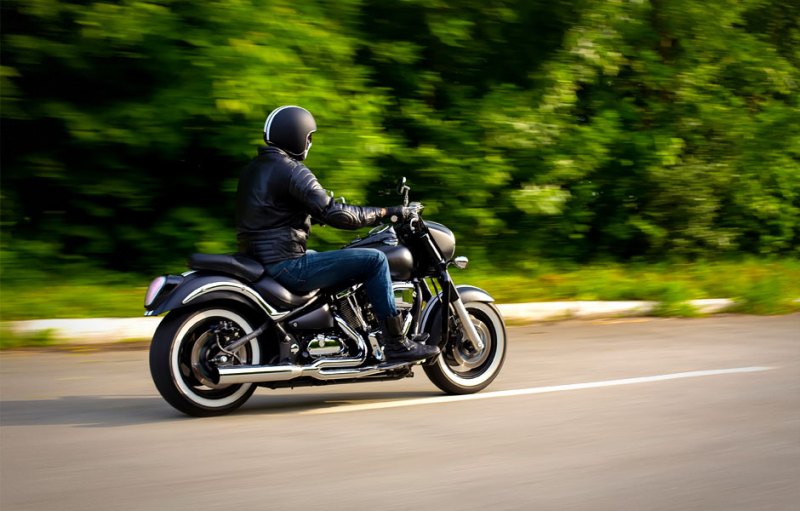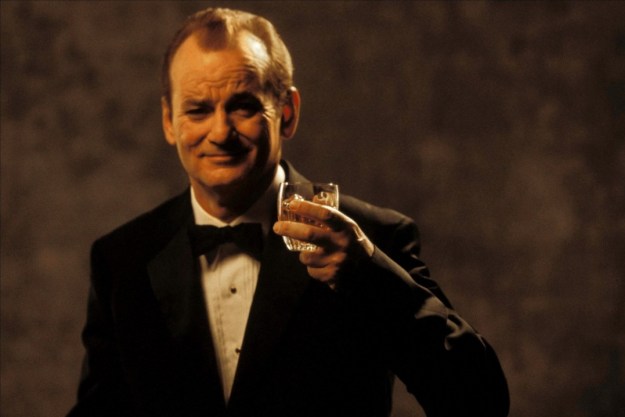
The Myth: People who ride motorcycles are low-class miscreants with larceny in their hearts.
The Truth: The vast majority of people who ride motorcycles are normal everyday Joes and Janes who have the same responsibilities and concerns as you do. Only recently has there been a positive shift in the popular perception of motorcyclists, largely due to media exposure by high-profile riders like comedian Jay Leno, the late billionaire Malcolm Forbes and numerous celebrity riders. Any gathering of motorcyclists is bound to have equal parts dentists, lawyers, mechanics, business owners, laborers, government workers, military veterans and so on. Motorcycling crosses all boundaries of class, race, gender and religion. It’s a great way to meet a lot of outgoing, interesting people. Are rough and tumble biker gangs a real thing? Yes, but their numbers are very tiny in comparison to the millions who ride for the plain joy and positive community of motorcycling.
The Myth: Motorcycles are extremely dangerous.
The Truth: Make no mistake, motorcycling is a high-risk activity. But ridden properly, with proper safety preparation and recognition of the inherent hazards, motorcycling is no different than other high-risk activities such as snow and water skiing, boating, horseback riding, personal watercraft, bungie jumping, sky diving or flying small aircraft. And so on. Good gear makes a big difference, and today’s motorcycles often include common safety equipment like ABS brakes and more. You decide the amount of risk you want to take in your life. If you think motorcycling is too dangerous, then it’s probably not for you. If you think you’d like to give it a try, you should. Get started right by going to school, and then hone your new skills with lots of riding.
The Myth: It’s just like riding a bicycle, only faster.
The Truth: While the basic physics involved are similar to bicycling, the similarities end there. Most people do not ride bicycles at 70mph in freeway traffic, and that involves a whole different set of skills and reactions. Also, the controls used to operate a full-sized motorcycle are totally different than that of a bicycle. Yes, you need the basic skill set of being able to balance and ride a bicycle if you want to ride motorcycles, but beyond that, the experience and skills needed are quite different.
The Myth: You’ve got to be big and strong to ride a motorcycle.
The Truth: Most of the strength needed to ride safely is mental strength. You must have at least normal physical strength to operate a motorcycle, but there are motorcycles available to fit most any size human. Indeed, the largest segment of new motorcycle riders may surprise you: it’s women, and that’s very good news indeed.
The Myth: Motorcycles are noisy, messy, unreliable machines.
The Truth: Like everything mechanical, motorcycling had an infant period where you really did need to be a good mechanic and carry a lot of shop rags to clean off the oil, etc. But modern (stock) motorcycles are just as quiet, reliable and clean as a modern automobile (maybe moreso). On top of that, they are less expensive to buy, get great gas mileage and cost less to keep up and repair. At a minimum, you’ll need to put in gas, check the oil, and take it in for a tune-up at specified intervals. You might have to oil the chain now and then (if your bike does indeed have a chain, many don’t), but there are easy and clean ways to do this. Part of the fun of ownership for many riders is keeping their machine in top condition. A large part of the universal appeal of motorcycles is their sheer mechanical nature, and now you can be as involved – or uninvolved – as you care to be.
The Myth: Most motorcycle accidents happen on the freeway.
The Truth: In fact, the freeway is the SAFEST place to ride! Why? Because everyone is moving in the same general direction at the same relative speed. Most motorcycle accidents happen in urban settings, at intersections, where many vehicles are moving at different speeds in different directions. And the largest cause of motorcycle accidents: riding while intoxicated. Almost half of all motorcyclists are killed or injured while riding under the influence of intoxicants. If you have visions of chasing the sunset on a deserted road that stretches to the horizon, then you’re imagining what is essentially the safest possible riding scenario. Go do it.
The Myth: If you hit a small rock while riding, you will immediately crash.
The Truth: If this myth were true, motorcycle riders would be crashing all around us all the time, and no one would ride. Yet this does not happen. Why not? Like everything else in the natural world, motorcycling is governed by the laws of physics. An object in motion tends to stay in motion. If you are riding down the road and you hit a rock the size of a walnut, the same thing happens to a motorcycle that happens to a car: you run over it. You feel a quick “bump-bump” as the suspension absorbs the shock of running over the rock (or any small object or road irregularity). A patch of gravel, on the other hand, does pose more of a hazard to a motorcycle than it does to a car. But with proper training and knowlege, you can safely ride through that, as well. It’s really a matter of preparation and practice.
The Myth: Don’t touch those front brakes, or you’ll go right over the handlebars!
The Truth: On the surface, this would seem correct: grab too much front brakes and over she goes, right? But if you look at any modern motorcycle, it’s obvious the front wheel always carries larger and more powerful brakes than the rear wheel. Why? Because the myth is false. Skilled riders do MOST of their braking with the front brakes because that’s where the best braking power is. If you just slammed on the rear brake, you would skid right into the object you are trying to avoid. Modern front brakes provide consistent, manageable stopping power comparable to the best brakes on modern cars, and these days, you can often get ABS and traction control as well.
The Myth: I had to lay it down to save it
The Truth: “I had to lay it down to save it” is what a lot of motorcycle riders say when retelling the story of a crash. What it means is “I intentionally crashed my motorcycle in order to avoid some greater catastrophe.” The truth is, most motorcycle crashes happen just as quickly as car crashes: in the blink of an eye. There’s no time to cooly “lay it down.” Besides, if you’ve got enough time to evaluate a hazard and then gently put your pride and joy into a controlled slide down the pavement in order to avoid… whatever, then you’ve got more than enough time to use the powerful modern brakes on your bike to either stop in time or slow down enough to find a way around the hazard. No one ever crashes “on purpose,” unless you’re in the movies.
The Myth: Motorcycles catch fire easily
The Truth: My dad told me this when I was growing up in order to warn me off bikes. It worked. Who wants to ride a rolling bomb? There’s all that gas in the tank, right between your legs, so it seems to make sense. But motorcycles spontaneously combusting pretty much never happens, unless the gas tank has some unseen leak, which is pretty easy to spot or smell before you get the bike fired up. And modern bikes, which use fuel injection, are safer still. Car fires are much more common than bike fires, and besides, if motorcycles caught fire on a regular basis, no one would ride them, including me.
The Myth: Wearing a helmet is more dangerous than not wearing one
The Truth: This myth came about because some riders chafe at the government telling them to wear a helmet by law. So those opposed to helmet laws (and helmets, I guess) claim that helmets obsure vision and block out sound while riding. Not agreeing with a law is one thing, telling plain falsehoods is another. Those accusations are plain wrong. Extensive testing and crash statistics clearly show that a helmet is the most important piece of safety gear you will use.
The human skull can repel an impact of about 10mph without injury. Helmets tend to work well at much higher speeds (sarcasm intended). If helmets block peripheral vision, the amount of “vision” blocked is trivial. Also, you can hear fine while wearing a helmet. Indeed, at city speeds, you can hear better with a helmet because it cuts through the wind, whereas without a helmet, your ears are fighting to hear above wind noise. At higher speeds, helmets do have wind noise, but it’s nothing compared to the deafening roar you get riding without protection over your ears. And modern helmets are amazing: lightweight, high tech, good looking and affordable. I’ve ridden both with and without a helmet and experience has taught me well that this “myth” is one of the most dangerous fallacies in the sport. Wear a lid, you’ll be glad you did.
Got a favorite motorcycle myth? Let’s discuss it in comments.
[Image credit: kozirsky/Shutterstock]


